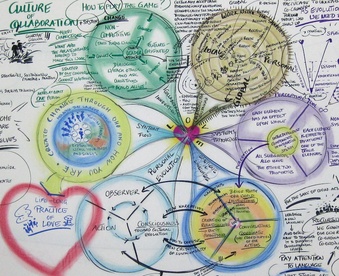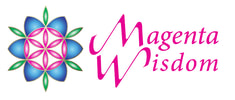 Dealing with Complexity—that’s the title of one of the foundation courses in the organizational systems program at Saybrook University that I teach. It is the introduction to systems thinking and students get an opportunity to learn the concepts and tools of how to not only understand but also identify leverage points where an intervention can make a difference. Individuals and organizations seem more able to acknowledge the increased complexity in our daily lives. It has become quite evident that the crucial problems that afflict our organizations, communities, and society at large cannot to be solved with “quick fixes.” In fact, each time we seek to address a complex problem with a simplistic approach, it backfires. And yet, learning to “deal” with complexity may be beyond the comfort zone of most people. It seems that dealing with complexity goes hand in hand with embracing uncertainty, ambiguity, constant change, and paradox. The ways of thinking and doing of the past are not very helpful anymore. The social and ecological challenges that we are facing around the globe are a perfect example of complexity—poverty, violence, injustice, water shortages, deforestation, climate change. Each problem is incredibly complex, but what makes each one complex is that the boundaries are not clearly defined. Where does poverty end and injustice begin? How is human conflict contributing to ecological degradation? Where do we begin to tackle these challenges? Many institutions decide to draw strong, arbitrary boundaries and define their purpose in a way that includes some aspects of a problem but exclude others. It is important to recognize that each time we decide to draw a boundary around an issue, we are doing so from a particular mental model that espouses certain values and assumptions. For instance, a few months ago I had the opportunity to present a project that I’m working on in Mexico to an investor group. The project involves the production of handcrafts made by inmates in a prison system who use recycled materials to create items such as purses in a fair-trade production. The business plan articulates the connection between the economic, social, and environmental dimensions of the enterprise. However, the investors strategic focus is poverty so they considered the environmental dimension of the project as “noise”—or something they don’t care about; something they think I should remove from the project. I was appalled. How could they not see the connection between poverty and the environment? I felt very strongly that their impact as social investors would be so much greater if they were able to see the systemic relationships that contribute and perpetuate poverty. It takes a systems thinker to see these connections and relationships. Systems models and maps are wonderful tools in helping us visualize “the mess,” the nickname Peter Checkland gave "complexity" in his classic book Systems Thinking, Systems Practice. That’s right: Complexity is messy. And our attempts to keep things “neat” and controllable are counterproductive when the challenge requires a transdisiplinary approach. This brings me to a reflection on dealing with complexity that is connected to the direction of my work. One thing is to perceive complexity, to map it, to identify nodes of interconnections as leverage points, and to influence the dynamics of the whole system, but this can remain a very rational and intellectual process. For us to truly learn to deal with complexity, we need to care. We need to engage our emotions, we need to be willing to perceive ourselves as part of “the mess”—not neutral observers, but actors. Unless we see ourselves embedded in this complexity—unless we accept that we are a key component of these interconnected problems—we won’t be able to be part of their solution or dissolution. Dealing with complexity involves multiple ways of knowing. It involves acknowledging the full range of our human experience and being willing to flow with the currents of change. Dealing with complexity is not an approach to solve problems, it is a way of dancing the path we call life.
0 Comments
Leave a Reply. |
AuthorKathia Castro Laszlo, Ph.D. Archives
September 2014
Categories
All
|

 RSS Feed
RSS Feed